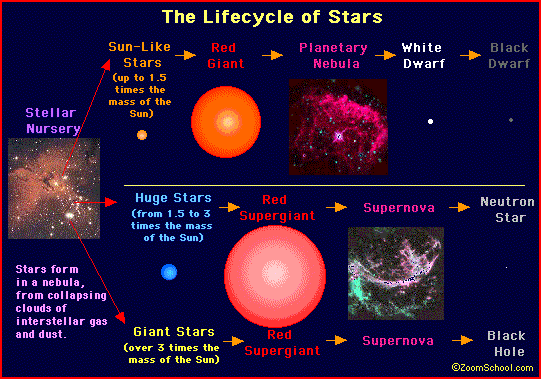Motor Daddy:
No, I don't think that's common knowledge.
It should be, and will be in the future.
How did a planet the size of Jupiter (or even the Earth, for that matter) overcome the gravitational attraction of the Sun to "depart it"? Please explain.
James, gravity is more than just matter attracting to other matter. There is a density order in the universe. That is, the most equilibrium shape for matter is a sphere with the most dense region at the center of the sphere and the least dense region at the outer edges of the sphere. Gravity is the repositioning of matter to it's proper position in the order. When you release a helium balloon at the surface of the earth, gravity is what makes it go away from the center of the earth, because it's less dense than the surface, or the air at the surface.
I can't speak for everybody, but this one is common knowledge among physicists. It's also common sense. The outside of a planet is exposed to space. The inside is not. The only place a planet can dump heat to is space.
Correct, it's a fact.
Please explain why the "current theory" cannot explain that. What does the current theory have to say about the matter? Where exactly does it fail?
Here's a link, for example, that talks about the current theory being baffled about how the gas giants formed. I'm not baffled about the question, are you?
http://www.msnbc.msn.com/id/7121201/ns/technology_and_science-space/
How was the Sun formed? Do you know?
Yes, I do know. According to my calculations, and the second law of thermodynamics, matter moves away from its core. The sun came from the galactic core, a massive black hole. Mass evolves to space at every level of the universe.
Cooling doesn't have to mean expanding. If I heat up a brick in the oven and then leave it outside to cool, it doesn't expand as it cools.
If you define the brick's volume as the exact volume of the brick as measured at the surface of the brick, and heat leaves the brick's volume, you either have to change the volume of the defined brick, or you have to say the brick is no longer a brick and it lost mass when it lost the heat.
In other words, like with the earth, the mass of the earth is the same, it's just that the volume is increasing due to the terrestrial part of the earth as we know it transforming into less dense material, say gas, and heat. That less dense material moves away from the core as it becomes less dense, due to gravity. So as the terrestrial part of the planet becomes less dense (mass evolves to space) the volume of the entire earth (including its atmosphere) is constantly getting larger. The earth (all all matter at every level) is constantly becoming less dense due to the second law of thermodynamics. It has to in order for the conservation of energy to be true..
Got any evidence that the Earth is expanding? Measurements of that kind of thing are surely made all the time.
The rocky part of the planet as we know it is becoming smaller, as the mass is becoming less dense, which means the less dense material has a greater volume, so the overall volume of the planet including the atmosphere is becoming larger, not smaller.
An example would be like burning a piece of paper. If all the mass was tracked and contained in space, when the paper burned it would be a much greater volume as the mass was transformed into ash and heat, and less dense material. The ash would be much smaller than the paper, but the total mass of the original paper would have become much less dense after the burning was complete, hence the paper's volume would be much greater after burning it. That is, if you track the entire mass of the original paper, which is only right.
What do you consider the outer boundary of the Earth?
Well according to the logic that an atom is comprised of a nucleus and an electron, surely I could say the earth's outer boundary encompasses the moon. According to that logic, I can say the sun's boundary encompasses the planets, and the galaxy's boundary encompasses all the solar systems that orbit the galactic core. After all, that is what a galaxy is, isn't it? A pic of a galaxy shows all the mass.

